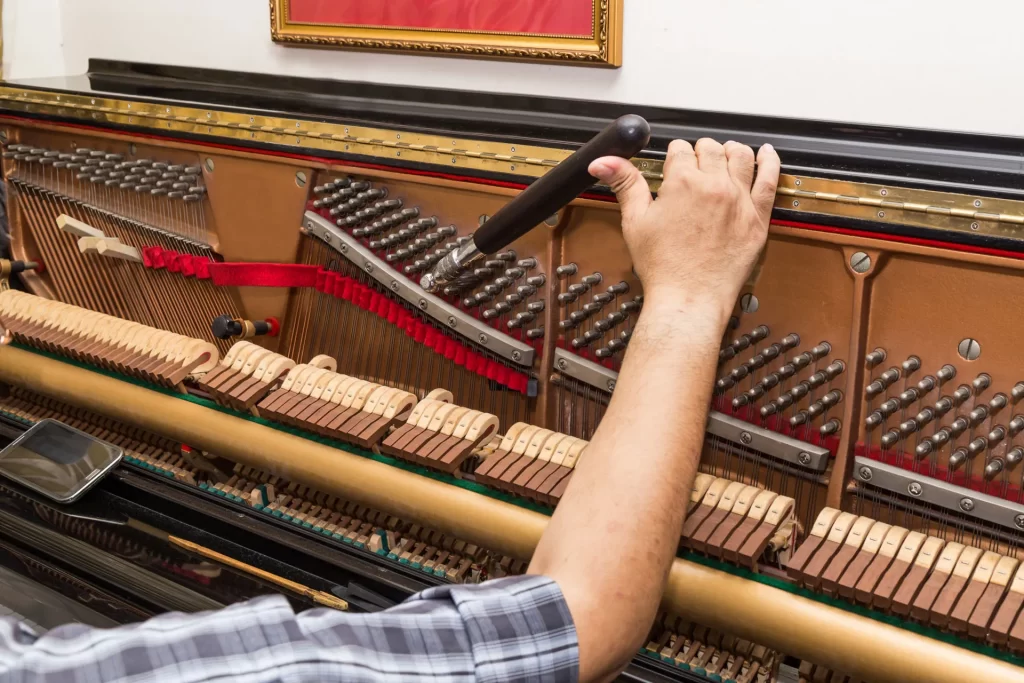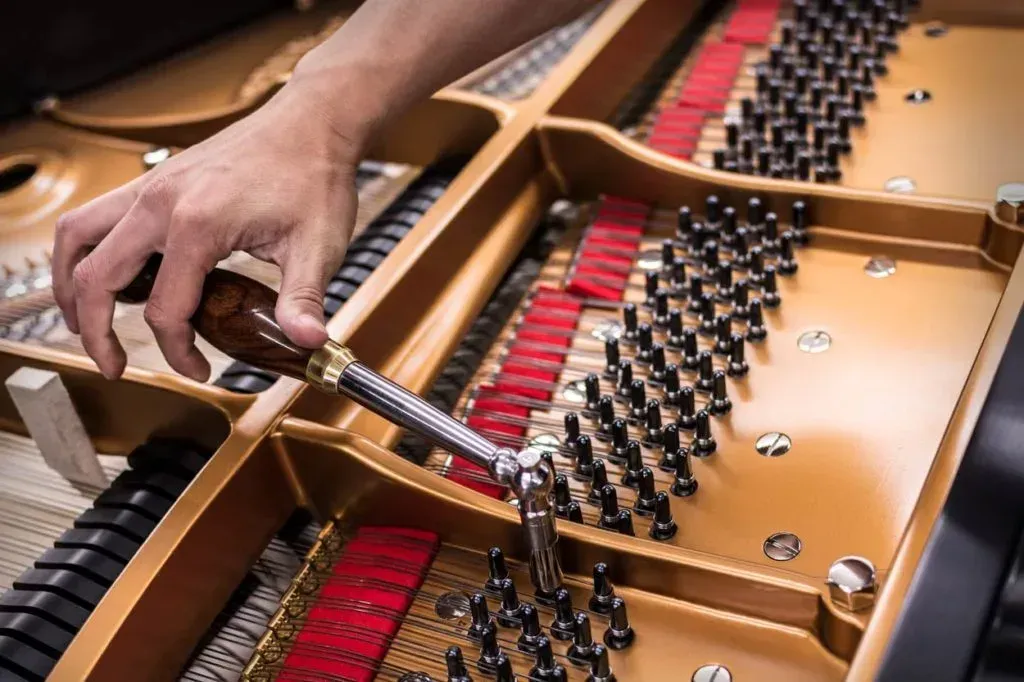Tuning a piano is both an art and a science. As a trusted name in piano services, we at TX Pianos understand that the sound and performance of a piano depend heavily on how well it’s tuned. Whether you are a new piano owner or someone who simply wants to understand the process better, knowing how to tune a piano can help you appreciate the craftsmanship behind every note. In this guide, we walk you through the full process of tuning a piano in eight clear steps.
Understanding Why Piano Tuning Matters
The piano is a complex acoustic instrument, consisting of over 200 strings under high tension. Over time, due to humidity changes, usage, and even the natural settling of materials, those strings can slip out of tune. Tuning a piano ensures that each note is aligned correctly, maintaining the rich, harmonious sound the instrument was designed to produce.
Tuning isn’t just about making your piano sound good—it’s essential for preserving the longevity of the instrument. Ignoring regular tuning can result in more serious and costly repairs in the future. If you’ve ever asked yourself how often to tune a piano, the general recommendation is at least twice a year. For newer pianos or those in performance settings, more frequent tuning may be needed.

Step One: Preparing Your Environment
Before you begin tuning a piano, the environment should be controlled. Pianos are sensitive to temperature and humidity, so ensure the room is neither too hot nor too cold and has stable humidity levels. Consistent environmental conditions help stabilize the pitch after tuning. We at TX Pianos recommend tuning in the same room the piano is regularly played in for best results.
Step Two: Understanding the Tools of a Piano Tuner
To successfully tune a piano, a few essential tools are required. The most important is the tuning lever, which is used to adjust the pins connected to the strings. You’ll also need mutes to silence certain strings during the process and an electronic tuning device or tuning fork for accuracy. Professional piano tuner tools are specifically crafted for precision—regular wrenches won’t do the job and could damage your instrument.
Step Three: Setting the A440 Pitch Standard
Tuning typically begins with the A4 note, set at 440 Hz, known as the international standard pitch. This note serves as the reference point for tuning the rest of the piano. An electronic tuner or tuning fork is used to match the pitch of the A4 string. Once A4 is tuned correctly, the process of tuning the remaining keys can begin.
Step Four: Tuning the Middle Octave
After setting the A4 note, a skilled piano tuner will move on to tuning the rest of the middle octave (also called the temperament octave). This area of the piano serves as a base to spread tuning across the instrument. It involves tuning by ear and using beat rates between intervals to ensure that the temperament is correctly set. It’s one of the most technically demanding parts of piano tuning, requiring both experience and a musical ear.
Step Five: Expanding Outward from the Middle
Once the temperament is set, the rest of the piano is tuned outward from the middle octave. This involves tuning octaves and fifths using the notes already tuned in the middle section. A trained ear will pick up on the subtle differences in pitch and ensure consistency throughout the entire keyboard. If you’re wondering can you tune a piano on your own, this stage is where many DIY attempts fall short, as it requires an advanced understanding of tone and frequency.
Step Six: Tuning Unisons
Most piano keys correspond to more than one string—commonly two or three. After the first string is tuned, the remaining strings of each note (the unisons) are tuned to match it exactly. The goal is to eliminate any wave-like sound, called beating, between the strings. Perfectly tuned unisons give the note its clean, pure tone. This is a meticulous part of the process and requires great attention to detail.

Step Seven: Final Adjustments and Checks
After all strings have been tuned, the entire piano is played through to check for any inconsistencies or pitch drift. Any minor adjustments are made during this step. At TX Pianos, we carefully test for tonal consistency and balance, ensuring the instrument is concert-ready before we consider a job complete. The piano may need to be played for a short time and then retuned to allow the strings to settle in their new tension positions.
Step Eight: Post-Tuning Care
Once your piano is tuned, proper care and maintenance are essential. Keep it in a room with stable temperature and humidity. Avoid placing it near heating vents, air conditioners, or windows. Many people ask how much to tune a piano and whether they should tip their piano tuner. The cost can vary depending on location, piano condition, and the experience of the technician. On average, piano tuning ranges from $100 to $150. As for whether you do tip piano tuner professionals, while it’s not required, it is appreciated—especially for exceptional service.
Why Choose TX Pianos for Tuning and Care
At TX Pianos, we take pride in our professional expertise, attention to detail, and customer-first approach. Our certified technicians are trained to tune, repair, and restore all types of pianos, from family uprights to grand pianos. We use only high-quality tools and follow proven tuning methods to ensure your piano sounds its absolute best.
Unlike many quick-service options, we believe in building relationships with our clients and their instruments. We take time to understand the piano’s unique character and history before beginning any tuning session. Whether you’re a new piano owner or a seasoned musician, our goal is to help your instrument maintain its tone, stability, and beauty for years to come.
Conclusion
Tuning a piano may seem like a complicated process—and in many ways, it is. It requires skill, knowledge, patience, and an ear for precision. While there are digital tools and guides available, nothing compares to the craftsmanship of a trained piano tuner. If you’ve ever wondered can you tune a piano by yourself, the honest answer is that while it’s possible, it’s rarely advisable without proper training. Your piano is an investment, and like any fine instrument, it deserves professional care.
Whether you want to learn how to tune a piano or you’re searching for a trusted professional, understanding the process gives you more control over your instrument’s longevity and sound quality. For the best experience, consult with professionals like us at TX Pianos, where piano tuning is done with passion and precision.
Contact us today to schedule your piano tuning appointment with TX Pianos.